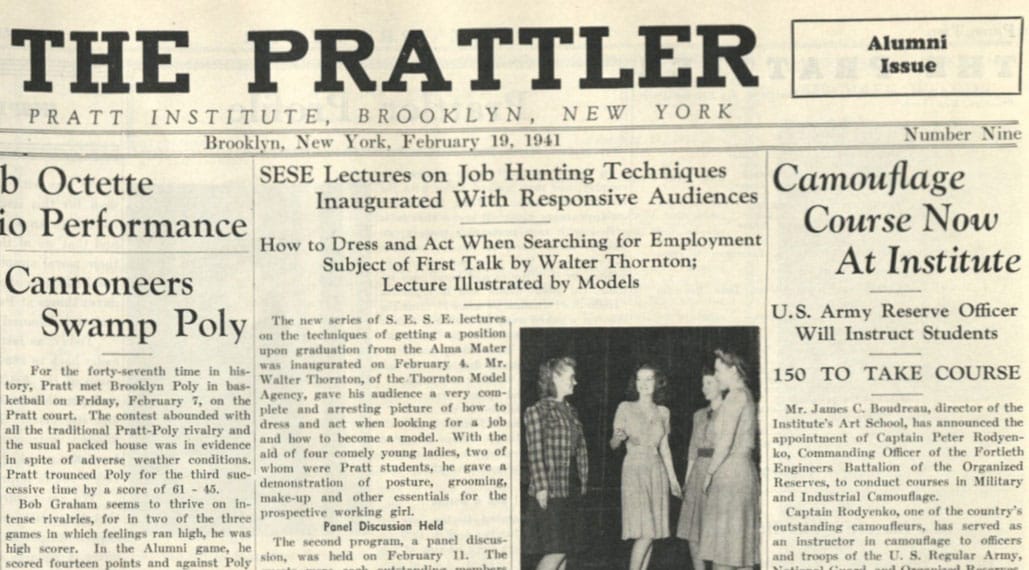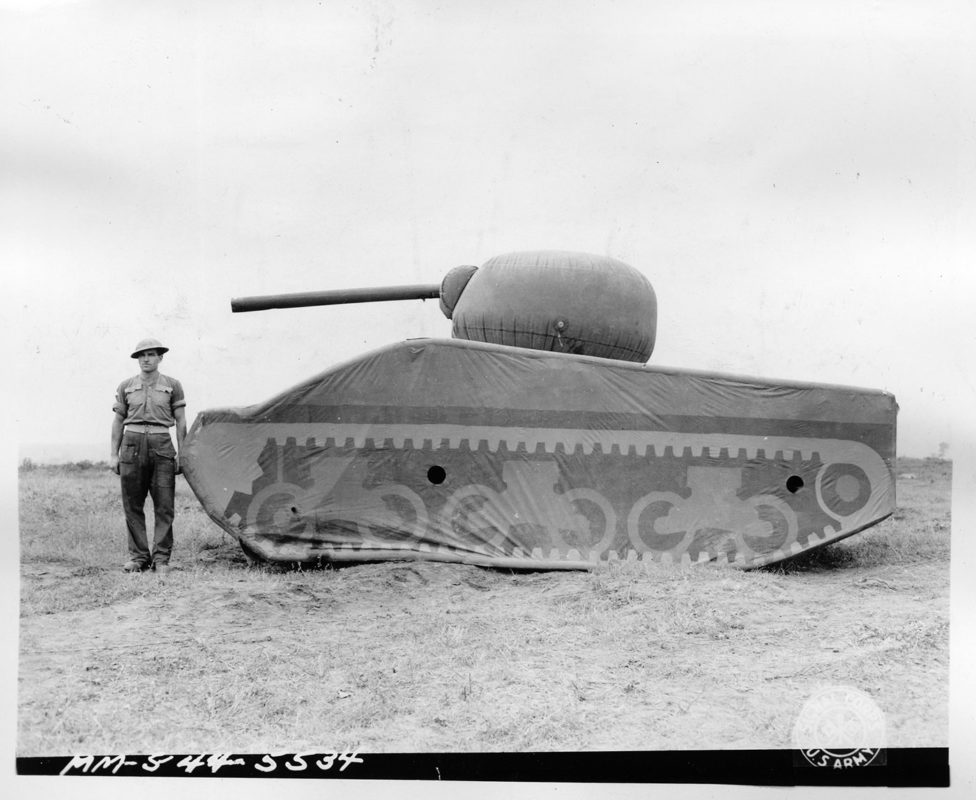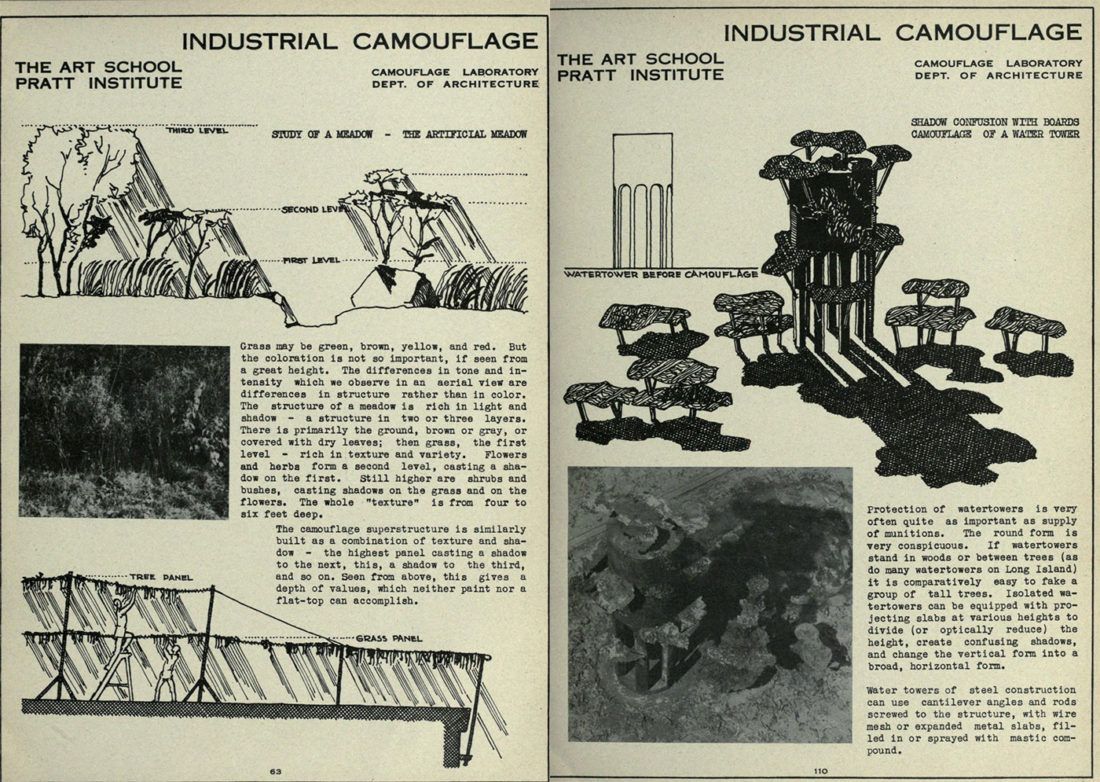Helping War Efforts Through Design: Pratt Institute

Today marks the 75th anniversary of VE (Victory in Europe) Day, the end of WWII in Europe. And, while we are currently in the midst of a very different kind of battle, it’s encouraging hope to look back on the students and faculty right here in Brooklyn who helped in the war efforts then, just like the current generation is helping fight COVID-19 now.
In 1940, James C. Boudreau, dean of what was then Pratt School of Art (now Pratt Institute) decided to offer an Industrial Camouflage Program. The program offered students a chance to research and develop new techniques for camouflaging both military and civilian structures to help mask them from aerial attacks and surveillance, and the program was so wildly popular that Boudreau could only accept 150 of the 450 interested in signing up.
Some of the program’s participants made use of their education on the battlefields by joining the 603rd Camouflage Engineers, part of the 23rd Headquarters Special Troops formed in 1944 and referred to by its troops as the “Ghost Army.”

During their time on the battlefield, the men used tactics like inflatable tanks, visual illusions, and sound effects to “cause confusion about the location and number of Allied troops, tank formations, and artillery batteries” among the German army. A 2008 issue of Prattfolio described four different Ghost Army units, including what it called a “sonic deception company” that produced fake artillery blasts and a “special radio company” that broadcast misleading information.
Models from the program found their way into the MoMa’s 1941 exhibit Britain at War and their 1942 exhibit, Camouflage for Civilian Defense, A Circulating Exhibition, the article states. The program’s results and findings were also published in a 1942 industrial camouflage manual, now digitized on the Internet Archive, which included “their recommendations on artificial textures to hide people and objects in nature, “shadow confusion” to disguise various types of buildings, and proposals for creating camouflage landscapes with arrangements of natural and fake trees made from nets.”

Since much of the Ghost Army’s work was classified until the 1990s, it only recently began to receive significant historical attention – such as with the 2013 PBS documentary, “The Ghost Army,” which interviewed veterans and Industrial Camouflage Program alumni Ed Biow, Victor Dowd, and Arthur Shilstone. NPR also published a piece, “Artists of Battlefield Deception: Soldiers of the 23rd” in 2007 as part of its series, World War Two Stories, and Dowd inspired an interactive children’s book, called “Victor Dowd and the World War II Ghost Army: A Spy on History Book.”
75 years after the war ended, the Industrial Design Program continues to focus on design-oriented solutions to current issues.
“Pratt Industrial Design students continue to be involved with the pressing issues of society and environment,” Constantin Boym, Chair of Pratt Institute’s Industrial Design department, told us over email.
“This year, many of the projects address the impact of COVID-19. Students look at specific problems and chart proposed solutions for both immediate societal needs, and for aftermath of the pandemic. For example, the Capstone Studio project by Griffin Uhlir “Democracy During Pandemic” is devoted to designing an inclusive and safe voting experience for forthcoming Presidential elections in November.”
In summer 2020, they’ll also be offering an interdisciplinary design course called “New Paradigms in Resilience,” which will “investigate and imagine the possibilities that design can play in the uncertain future, investigating systems and structures that frequently fail us in times of natural and man-made disasters.”




